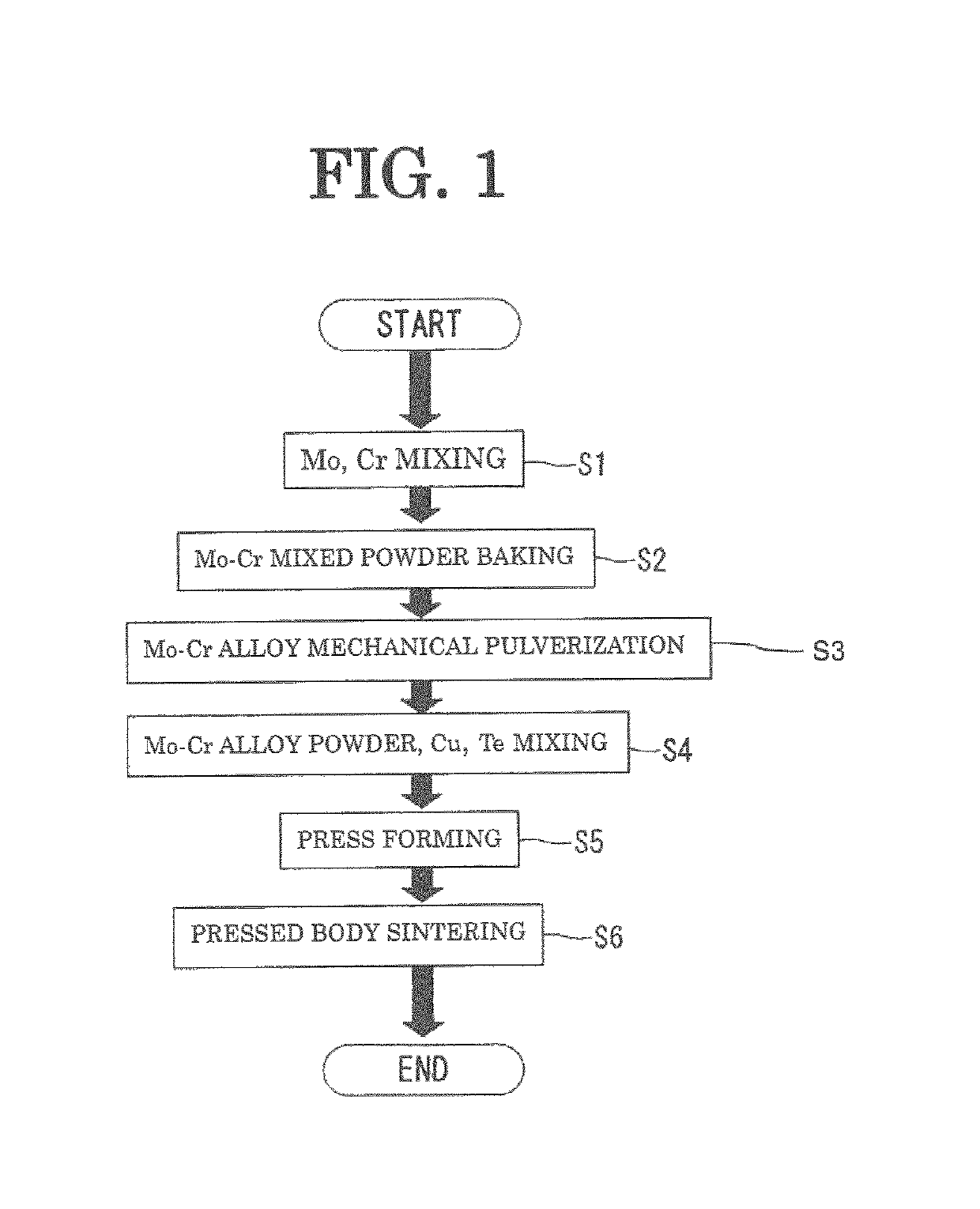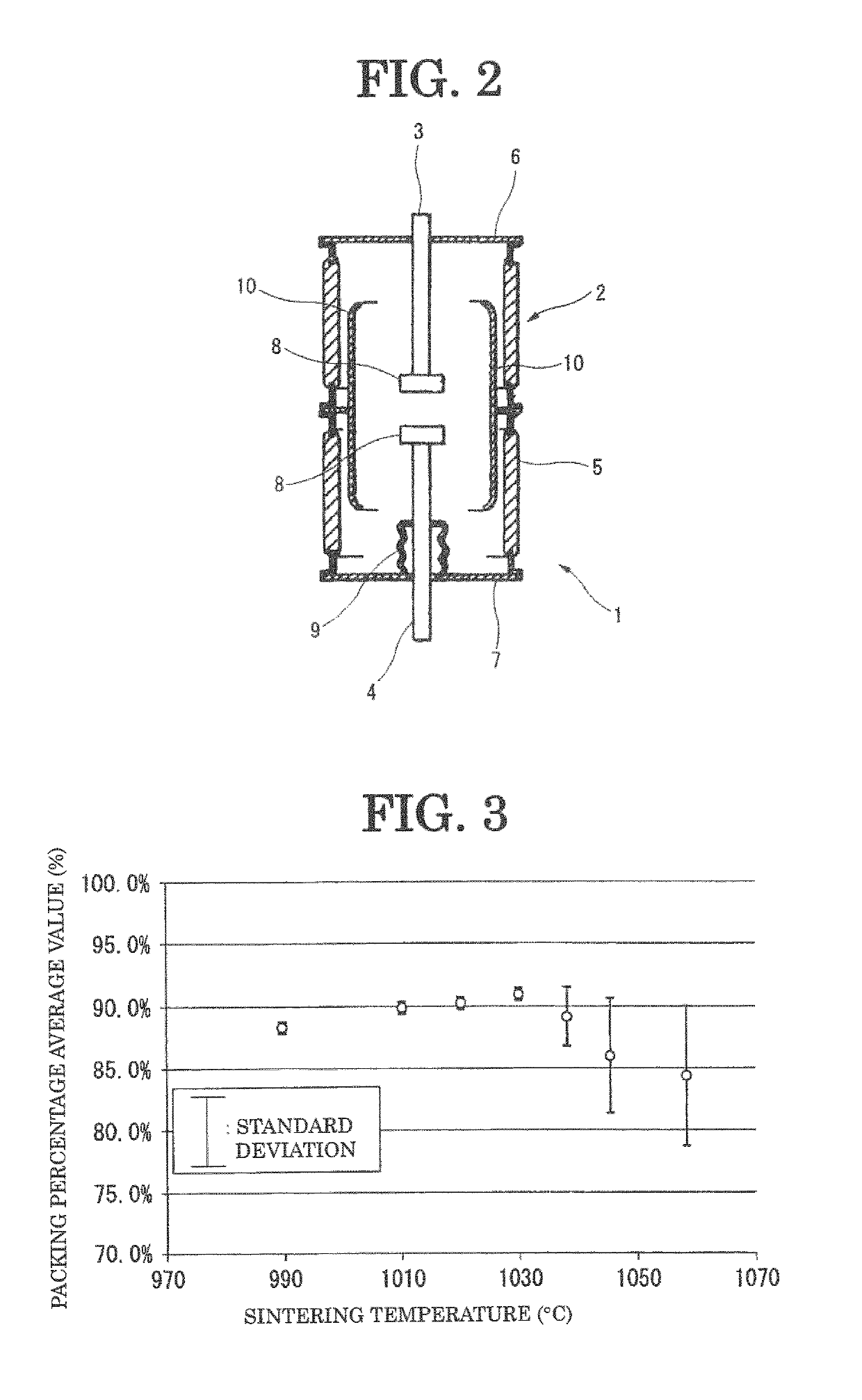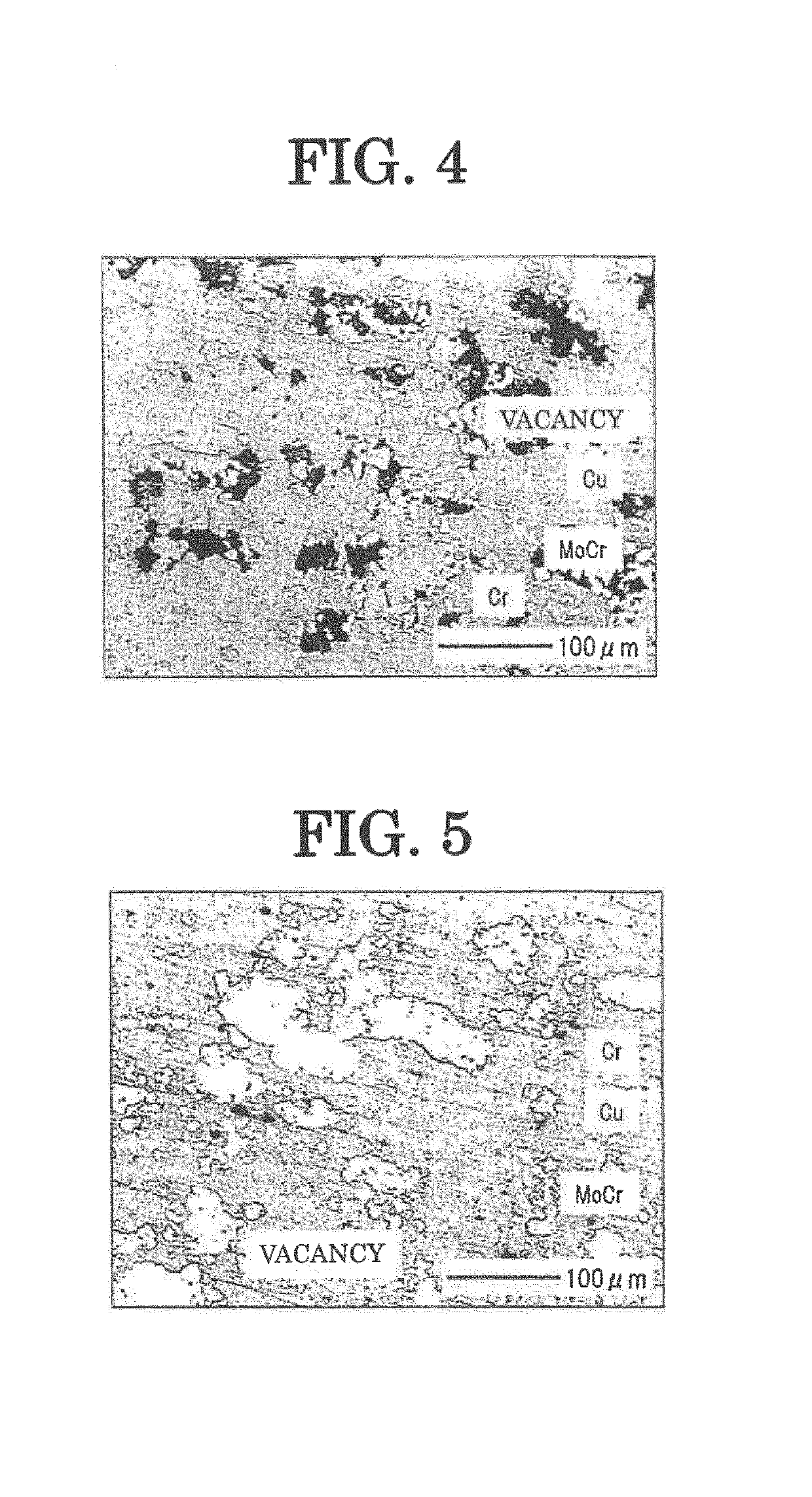Method for manufacturing electrode material and electrode material
a manufacturing method and electrode material technology, applied in the direction of contacts, air-break switches, transportation and packaging, etc., can solve the problems of lowering the packing percentage of the electrode material, the contact material cannot meet all of the above characteristics, and the dispersion of the packing percentag
- Summary
- Abstract
- Description
- Claims
- Application Information
AI Technical Summary
Benefits of technology
Problems solved by technology
Method used
Image
Examples
example 1
[0061]The electrode material of Example 1 is an electrode material prepared by the same method as that of Comparative Example 1, except that the sintering temperature in the primary sintering step S6 was different.
[0062]The electrode material of Example 1 was prepared in accordance with the flow shown in FIG. 1 (the number of samples N=3). In the primary sintering step S6, the compact was sintered at 1030° C. for two hours.
[0063]As shown in Table 1 and FIG. 3, the average value (N=3) of packing percentage of the electrode material of Example 1 was 91%. Furthermore, standard deviation a of packing percentage was 0.4. As a result of checking brazing property of the electrode material of Example 1, brazing property was good. That is, when conducting brazing, fillet was formed, and the electrode material did not come off the lead even when the electrode material was hit with a hammer (Examples 2 and 3 were also similar).
[0064]FIG. 5 shows a sectional microphotograph of the electrode mat...
example 2
[0065]The electrode material of Example 2 is an electrode material prepared by the same method as that of Comparative Example 1, except that the sintering temperature in the primary sintering step S6 was different.
[0066]The electrode material of Example 2 was prepared in accordance with the flow shown in FIG. 1 (the number of samples N=3). In the primary sintering step S6, the compact was sintered at 1020° C. for two hours.
[0067]As shown in Table 1 and FIG. 3, the average value (N=3) of packing percentage of the electrode material of Example 2 was 90%. Furthermore, standard deviation a of packing percentage was 0.5. As a result of checking brazing property of the electrode material of Example 2, brazing property was good.
example 3
[0068]The electrode material of Example 3 is an electrode material prepared by the same method as that of Comparative Example 1, except that the sintering temperature in the primary sintering step S6 was different.
[0069]The electrode material of Example 3 was prepared in accordance with the flow shown in FIG. 1 (the number of samples N=3). In the primary sintering step S6, the compact was sintered at 1010° C. for two hours.
[0070]As shown in Table 1 and FIG. 3, the average value (N=3) of packing percentage of the electrode material of Example 3 was 90%. Furthermore, standard deviation a of packing percentage was 0.4. As a result of checking brazing property of the electrode material of Example 3, brazing property was good.
PUM
| Property | Measurement | Unit |
|---|---|---|
| temperature | aaaaa | aaaaa |
| temperature | aaaaa | aaaaa |
| median size | aaaaa | aaaaa |
Abstract
Description
Claims
Application Information
 Login to View More
Login to View More - R&D
- Intellectual Property
- Life Sciences
- Materials
- Tech Scout
- Unparalleled Data Quality
- Higher Quality Content
- 60% Fewer Hallucinations
Browse by: Latest US Patents, China's latest patents, Technical Efficacy Thesaurus, Application Domain, Technology Topic, Popular Technical Reports.
© 2025 PatSnap. All rights reserved.Legal|Privacy policy|Modern Slavery Act Transparency Statement|Sitemap|About US| Contact US: help@patsnap.com



